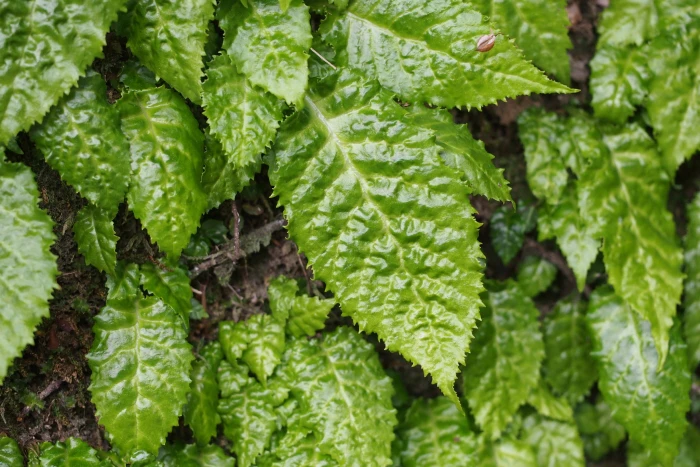Japanese Toad Lily
(Conandron ramondioides)
Japanese Toad Lily (Conandron ramondioides)
/
/

harum.koh
CC BY-SA 4.0
Image By:
harum.koh
Recorded By:
Copyright:
CC BY-SA 4.0
Copyright Notice:
Photo by: harum.koh | License Type: CC BY-SA 4.0 | License URL: http://creativecommons.org/licenses/by-sa/4.0/ | Rights Holder: harum.koh | Publisher: iNaturalist | Date Created: 2019-05-12T15:38:57-07:00 |

























Estimated Native Range
Climate Requirements for Paramus, New Jersey
| This Plant | Your Site | Plant Suitability for Your Location | ||
|---|---|---|---|---|
| • Precipitation | 43" - 137" | 48" | Aquatic | Aquatic |
| • High Temp. | 15°F - 93°F | 86°F | Your summer temperatures are normal for this plant. | Excellent |
| • Low Temp. | -12°F - 61°F | 21°F | Your winter temperatures are normal for this plant | Excellent |
This plant should grow well at your location with about N inches per year (Y minutes per month) of irrigation.
Summary
Conandron ramondioides, commonly known as Japanese Toad Lily or Grecian Pattern Plant, is a perennial herb native to the rocky cliffs and forest margins of Japan. It typically grows to a height and width of 0.6-1 feet (0.18-0.3 meters), forming a compact clump. The plant is characterized by its unique flowers, which are usually purple with intricate, white patterning, resembling orchids. These showy flowers bloom in late spring to early summer and can add a touch of exotic flair to a garden. The foliage is also attractive, with a lush green appearance that complements the flowers.
Japanese Toad Lily is valued for its ornamental flowers and its ability to thrive in shaded conditions, making it an excellent choice for woodland gardens, shaded borders, or as an understory plant in a forest garden. It prefers part shade to full shade and consistently moist, well-drained soils rich in organic matter. While it can tolerate medium draining loam or clay soils, it performs best in slightly acidic to neutral pH. This plant is relatively low-maintenance, but it is important to ensure that the soil does not dry out. It is not known for serious pest or disease problems, but slugs and snails can sometimes be an issue. It is not typically invasive and does not have aggressive roots, making it a safe choice for most garden settings.CC BY-SA 4.0
Japanese Toad Lily is valued for its ornamental flowers and its ability to thrive in shaded conditions, making it an excellent choice for woodland gardens, shaded borders, or as an understory plant in a forest garden. It prefers part shade to full shade and consistently moist, well-drained soils rich in organic matter. While it can tolerate medium draining loam or clay soils, it performs best in slightly acidic to neutral pH. This plant is relatively low-maintenance, but it is important to ensure that the soil does not dry out. It is not known for serious pest or disease problems, but slugs and snails can sometimes be an issue. It is not typically invasive and does not have aggressive roots, making it a safe choice for most garden settings.CC BY-SA 4.0
Plant Description
- Plant Type: Herb
- Height: 0.6-1 feet
- Width: 0.6-1 feet
- Growth Rate: Moderate
- Flower Color: Purple
- Flowering Season: Summer
- Leaf Retention: Deciduous
Growth Requirements
- Sun: Part Shade, Full Shade
- Water: Medium
- Drainage: Medium
Common Uses
Border Plant, Low Maintenance, Potted Plant, Rock Garden
Natural Habitat
Native to the rocky cliffs and forest margins of Japan
Other Names
Common Names: Grecian Pattern Plant
Scientific Names: Conandron ramondioides, Conandron minor, Conandron minor, Conandron ramondioides f. leucanthum, Conandron ramondioides f. leucanthus, Conandron ramondioides f. pilosum, Conandron ramondioides f. variegatum, Conandron ramondioides subsp. leucanthum, Conandron ramondioides subsp. pilosum
GBIF Accepted Name: Conandron ramondioides